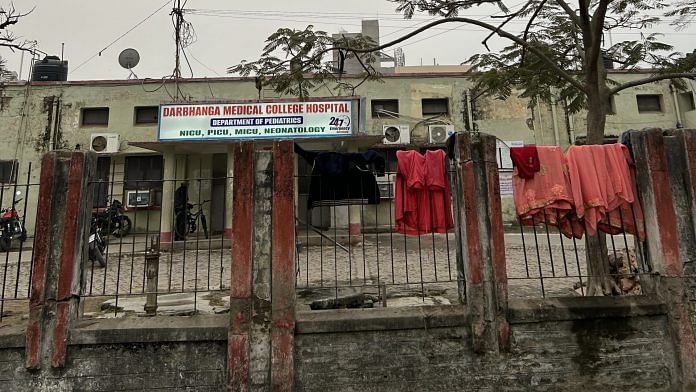A few days ago, a family friend recounted his recent trip to the hospital. He was taken to the ICU. However, once he was stabilised, he wasn’t moved to a normal room. He was kept in the ICU for another day. The reason? Rooms weren’t free. The result: A crucial ICU bed was occupied by someone who didn’t need it.
This was at a large private hospital and it isn’t a one-off case. That there aren’t enough hospital rooms and beds in India is known. The latest World Bank data, from 2021, shows India on average has 1.6 hospital beds per 1,000 people.
The lament in the central government is that health is a state subject and so a lot of what is needed to improve and increase healthcare facilities is out of the Centre’s hands.
But the fact is the Centre is already using potent fiscal tools—primarily through loans and borrowing limits—to nudge states to do what it wants them to. Why isn’t it using these to enhance health and education?
Also read: 2 clerks, 1 director, 1 room—AIIMS Darbhanga a story of political rush to announce & forget
The dangling carrot
One of these tools is the enhanced borrowing limits. Under the conventional rules, states are allowed to borrow up to 3 per cent of their gross state domestic products (GSDP). However, since the pandemic, the Centre has allowed them 0.5 per cent of additional borrowing if they conduct particular reforms in the power sector.
Now, this carrot was a particularly enticing one since, from 2022 onward, the states were no longer entitled to the generous compensation they had been receiving from the Centre for losses arising from GST implementation. The compensation plan assured these states a robust 14 per cent annual growth in their tax revenues.
With that five-year compensation period over, several states were suddenly in dire need of additional funds. The additional borrowing limit was thus a clever tool designed at the right time. As of March 2023, the latest period for which the government has made the data available, 12 states had implemented the required reforms and had received permission to borrow more.
In addition, the Centre came up with a plan called the ‘Special Assistance to States for Capital Investment’ scheme, under which it promised states 50-year interest-free loans for capital creation. Again, the lure of interest-free loans, at a time when the RBI had ramped up interest rates, and that too for 50 years, was a great one.
The guidelines of the loans were also constructed in such a way that states were incentivised to implement reforms. So, while a portion of the loan amount was left untied, the bulk was kept tied to particular reforms to do with vehicle scrappage, urban planning, land reforms, digitisation, reforms in urban local bodies, and some other areas. If these reforms were implemented, the loan amount tied to them would be released.
The government recently informed Parliament that, for 2024-25, it had approved Rs 1.22 lakh crore worth of such loans to states out of the total Rs 1.5 lakh crore it had earmarked for the purpose. This shows that a large number of the required reforms were indeed carried out.
Also read: AIIMS Jodhpur has changed healthcare in Rajasthan. But now it’s cracking under patient load
Incentivise health, education
It is now time to tweak these tools to improve the level of healthcare and education in the country. As per the latest Annual Survey of Education Report, learning outcomes in India have only now reached where they were in 2018. That’s six years lost.
On the health front, the latest Household Consumption Expenditure Survey (HCES) for 2023-24 shows urban households allocate almost 10 per cent of their non-food expenditure to medical expenses. This proportion is about 13 per cent among rural households.
Yes, some of this increase in expenditure is due to inflation, but a lot has to do with people choosing private healthcare over what is provided by the government. As India ages, the proportion of medical expenditure is only going to increase.
The ready answer for this is to of course increase the number of government hospitals, and the number of doctors and nurses working at them.
After seeing how effective its past nudges have been, the Centre should now tweak its schemes to mandate that additional borrowing limits or interest-free loans will be provided if a state creates a certain number of hospitals and medical colleges.
The next step is to attract teachers at these colleges, and ensure a minimum level of quality, but if you create enough demand, supply will soon follow. Sure, quality is a matter for regulation to handle. But build the infrastructure first.
The same applies to education as well. Incentivise the setting up of new schools and teacher training facilities.
Reforms of urban local bodies and the scrapping of vehicles are all well and good, but tools that have proven to be effective need to be deployed in more critical areas.
TCA Sharad Raghavan is Deputy Editor – Economy at ThePrint. He tweets @SharadRaghavan. Views are personal.






